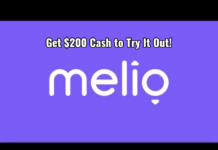
In this article
High Yield Savings Accounts – Which Are Best? Earn 5%+
Let’s forget miles, points, and even long term investing for a minute and think about your free cash. After all, it’s been ages since one could return 5%+ risk free like we can in the current interest rate environment.
(PS: I love personal finance almost as much as miles and points.)
Whether you are saving for a downpayment on a house and can’t afford market risk or just want to hedge against a downturn, there is nothing wrong with 5%+ for a percentage of your assets.
Yet too many people have their money in a traditional savings account, earning a fraction of 5%.
Some even leave it in their “big bank” savings account earning 0.05% or less – that’s right, over 99% less than they could be elsewhere.
Financial institutions, including brick-and-mortar banks, online banks, and credit unions, offer a variety of savings options, such as so-called “traditional savings accounts,” which generally provide the lowest interest rates, sometimes as low as 0.01% APY, compared to high-yield accounts but come with insurance protection. I have seen Chase and Citi offer special accounts (that may fluctuate in rate faster than expected) but those are still n the 4% range and less than what I’ll talk about below.
It’s pretty confusing to know what to do gievn all the options and the range for which they are good – or terrible – for your finalncial well-being.
So let’s take a peek at some of your best options:
A Standard Online High Yield Savings Account – FDIC Insured
Online high yield savings account nearly always pay more than brick and mortar banks and, as long as you double check the bank has FDIC coverage (any actual bank does), then you are insured against bank failure for up to $250,000 individually or $500,000 in a joint account.
While I used to be a fan of Goldman Sach’s Marcus, they earn much less than they used to which is sub-optimal. And while you can get an extra 1% for 3 months by getting a referral bonus, that is a lot of work to just barely top what you can get with no effort.
While UFB Direct was once a great option, they’ve dropped rates faster than the average online bank.
Right now, I’d stick with Bask Bank’s Interest Savings Account which, while it’s dropped under 5% in the falling rate environment, is still one of the best of the bunch and from a name I trust.
Money Market Accounts
Some people love money market accounts (which are generally invested in government bonds and related instruments) instead of high yield savings accounts. Some online banks offer a money market account but you’ll most often buy these in your brokerage account.
My two gold standards for money market accounts are both Vanguard funds. Some other banks will let you buy these in their own brokerage accounts but some won’t and you’ll have to look for the closest match. For instance, you can buy the Vanguard funds I’m about to mention in a Chase brokerage account but not Citi and not Schwab. Obviously you can open then in a Vanguard account 😉
VMFXX: This is the standard Money Market account for Vanguard brokerage accounts, known as a Sweep Account. Uninvested money gets parked here and any investments made get drawn from this account and then settled back to the account when cleared.
Your money is in goverment instruments that most consider to be as safe as can be unless the country completely collapsed. The funds are setup so one share equals one dollar. There have only been two times in history when a Money Market fund caused an investor loss. Once in 1994 (investors got back 96% of their invested capital. And then again in 2008, due to the Lehman bust, investors in one Money Market fund got liquidated at 97%.
That said, VMFXX does not invest in derivitives or corporate bonds – so it would not have been hit in either situation. I say this to be clear that I would only park my money in a Money Market fund that is 100% in government backed instruments.
VUSXX: This fund is my secret weapon for those living in a high tax state like NY or CA or CT.
This fund is (depending on the year) entirely or almost entirely state tax free due to the types of government instruments it invests in. Usually there is a delta between VMFXX and VUSXX that offsets this but for the last many months, it’s been nearly equal.
Therefore, investing in VUSXX makes a ton of sense since you’ll keep more than half a percent more money after tax.
These have no monthly fees and the expense ratio (the cost to manage the fund) is miniscule.
Unlike a Bask Bank or similar bank account, money market funds held in brokerage accounts are subject to SIPC insurance rather than FDIC. The limit of SIPC protection is $500,000, which includes a $250,000 limit for cash. (The money market fund is not considered cash.)
The minimum investment for both Vanguard funds is $3,000. Note that the links to Vanguard are not affiliate links – I simply think they are the best Money Market accounts.
Bonds and T-Bills
I think that bonds gets a bit far afield of the point of this article but I’ll note that if you found the 2 year T-Bill yield attractive and would hold to maturity if rates actually rise (instead of fall as expected later this year), these are incredibly easy to buy at a brokerage like Vanguard. They tell you when the next auction is and you bid for the amount you want (of course the exact rate is not known until after the auction, but you have an estimated rate). There are no fees at Vanguard. I don’t know if other brokerages charge for the purchase. These are state tax free and a large part of what is held in VMFXX and VUSXX, for example.
Mileage Earning Bank Accounts
I don’t want to spoil the calculations I’m making now, but for many there can be a place for a mileage savings account that earns miles instead of cash interest like the Bask Mileage Savings Account offered by Bask Bank (a division of Texas Capital Bank). I’ll have that article out in a couple of weeks.
Summary
Whatever you are doing with your free cash, whether it’s $3,000 or $250,000, please make sure you aren’t accepting less than 5% on your cash. The compounding over time really adds up and older you will thank you 🙂
If you have any questions (or are surprised I’m also so into personal finance), ask me your questions below!
Questions?
Let me know below in the comments, on Twitter, or in the private MilesTalk Facebook group. And don't forget to follow me on Instagram for all sorts of tips on miles, points, credit cards, and travel.
If this post helped you, please consider sharing it!
You can find credit cards that best match your spending habits and bonus categories at Your Best Credit Cards.
New to all of this? My “introduction to miles and points” book, MilesTalk: Live Your Wildest Travel Dreams Using Miles and Points is available on Amazon and at major booksellers.














![Amazon “Pay One Point” Deal Links (Compilation) [UPDATED] amazon pay one point pay 1 point links amex chase citi discover](https://milestalk.com/wp-content/uploads/2023/11/payonepoint-218x150.png)




Another option, is Wealthfront, its basically a cash sweep account but it functions as a primary checking account with 5% interest, unlimited withdrawals and no minimum or maximum balance.